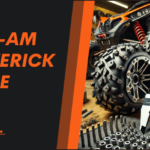The point when you update from a resistor regulator to a strong state regulator in your 1986 E-Z-GO golf truck, you’re making a major improvement. Strong state regulators are undeniably more proficient, solid, and savvy over the long haul. Here’s the reason:
- Better Efficiency: The traditional resistor system wastes energy by turning it into heat. Solid-state controllers only use the exact amount of power needed, reducing energy loss and increasing battery life.
- Smoother Performance: With a solid-state system, you get much better speed control. The speed is smoother and more responsive compared to the jerky acceleration with resistor systems. This means you can drive your cart with more control, especially on hilly terrain.
- Fewer Maintenance Issues: Dissimilar to the more established resistor framework, which frequently needs fixes (particularly with parts like wiper arms and loops), a strong state regulator has less moving parts and is considerably more solid. This gets a good deal on fixes and upkeep.
Understanding the Conversion Process
Before you start, it’s important to know the components you’ll be working with. Here’s a breakdown of the key parts:
- Resistor-Based System: This framework utilizes a huge resistor loop that controls the voltage shipped off the engine. At the point when you push the gas pedal, the resistor curl gets hot and limits the current to the engine, which influences speed.
- Solid-State Controller: This framework utilizes electronic circuits rather than resistors to control the current. It sends the perfect proportion of capacity to the engine in view of your choke input, bringing about better execution and effectiveness.
The change interaction itself includes supplanting the old resistor parts with another strong state regulator, which will be the core of your new framework. This requires a touch of work yet is sensible with the right devices and direction.
Tools and Skills Needed
Prior to beginning the change, accumulate the fundamental devices and guarantee you have an essential comprehension of electrical frameworks. You’ll require this:
- Basic Hand Tools: Wrenches, screwdrivers, and pliers are a must for removing and installing parts.
- Wire Cutters and Strippers: These will help you manage the wiring and make clean cuts.
- Voltage Tester: To make sure your system is properly powered and to avoid electrical shocks.
- Multimeter: To check the voltage and ensure your new controller is working correctly.
You needn’t bother with to be a specialist to do this change, yet some information on how electrical frameworks work will make the cycle simpler. On the off chance that you’re uncertain, think about asking somebody with experience or employing an expert to help.
Step-by-Step Guide to Conversion
Here’s a simple breakdown of the conversion process:
Preparation:
- Safety First: Before you start, try to separate the battery to stay away from any electrical mishaps. Wear gloves and goggles for additional assurance.
- Inspect the Cart: Really look at the current wiring for any harm or erosion. It’s really smart to clean the connectors and actually look at the battery’s condition.
Removing Old Components:
- Remove the Resistor: The resistor system has a big coil and solenoid that needs to be taken out. Disconnect the wiring and carefully remove these parts. You may need to unscrew or unbolt the resistor and other components like the wiper arm.
- Disconnect the Solenoid: The solenoid is responsible for switching the motor on and off. You’ll need to disconnect it as well. Make sure to label the wires to avoid confusion when installing the new controller.
Installing the Solid-State Controller:
- Place the New Controller: Position your new solid-state controller where the old resistor system used to be. Most solid-state kits come with a mounting bracket to make this step easier.
- Connect the Wiring: This step requires you to follow the instructions carefully.Interface the wires from your truck’s choke and engine to the new regulator. Ensure the wiring is done accurately to keep away from electrical issues.
- Attach the Solenoid: On the off chance that your new strong state unit accompanies another solenoid, introduce it set up and wire it to the regulator.
Testing the System:
Once everything is connected, double-check all your work. Reconnect the battery and turn on the cart. Gently press the accelerator to see if the motor starts running smoothly. Use a voltage tester or multimeter to ensure the power levels are correct and consistent.
Also Check : How to Select the Perfect Can-Am Maverick R Tire Stud Size
Common Challenges and Troubleshooting
While converting a 1986 E-Z-GO to solid-state control is a great upgrade, it can come with a few challenges:
- Wiring Mistakes: One of the most common issues is incorrect wiring. Always follow the wiring diagram carefully and double-check your connections.
- Motor Issues: Sometimes, the motor might not be compatible with the new controller, especially if the cart’s original motor isn’t built for solid-state conversion. In such cases, you may need to upgrade the motor as well.
- Controller Settings: If the speed or torque feels off after installation, check the settings on your new solid-state controller. Some models have adjustable settings for fine-tuning performance.
Choosing the Right Conversion Kit
When picking a conversion kit, it’s important to choose one that’s specifically designed for your 1986 E-Z-GO model. Here’s what to look for:
- Compatibility: Make sure the kit matches your golf cart’s motor and electrical system. Most kits will tell you which cart models they’re compatible with.
- Quality: Look for well-known brands that offer warranties and customer support. A quality kit will last longer and offer better performance.
- Customer Reviews: Check reviews or forums for feedback from other users who have done similar conversions.
Real-World Impact of Conversions
Upgrading to a solid-state system can completely change the performance of your cart. Users often report:
- Better Speed Control: No more jerky starts and stops. The acceleration is smooth and gradual.
- Increased Battery Life: Because the controller uses energy more efficiently, you’ll notice your battery lasts longer, meaning fewer trips to recharge.
- Reduced Maintenance: Fewer parts mean less wear and tear. The controller’s design is durable and less prone to failure.
Additional Maintenance Tips Post-Conversion
Once your conversion is complete, keeping your cart in top condition is important. Here are some simple maintenance tips:
- Check the Wiring: Periodically inspect the wiring to ensure it’s still intact and there are no signs of wear or corrosion.
- Test the Controller: Regularly test the controller’s performance to ensure it’s still operating smoothly. If you notice any issues, check the settings and wiring.
- Battery Care: Always keep your battery in good shape by charging it properly and checking the water levels if it’s a lead-acid battery.
FAQs
How long does the conversion take?
Typically, the process can take anywhere from 4 to 6 hours, depending on your experience.
Can I do it myself?
Yes! If you have basic electrical knowledge, you can follow the instructions and do it yourself. Just take your time and be careful.
How much does it cost?
Conversion kits typically cost between $300 and $600, depending on the brand and components included. Professional installation might add to the cost.
Conclusion
Updating your 1986 E-Z-GO golf truck from a resistor regulator to a strong state framework is an incredible interest in the presentation and productivity of your truck. While the interaction requires some work, the advantages — smoother rides, longer battery duration, and less upkeep — are definitely justified. In this way, assuming that you’re prepared to support your truck’s presentation, follow these means and take in the scenery!


